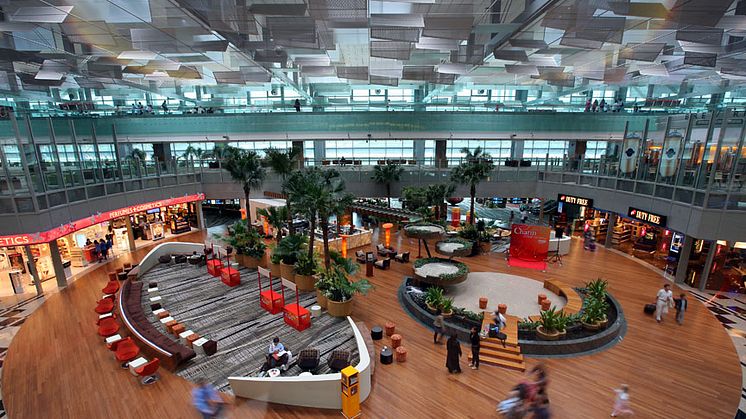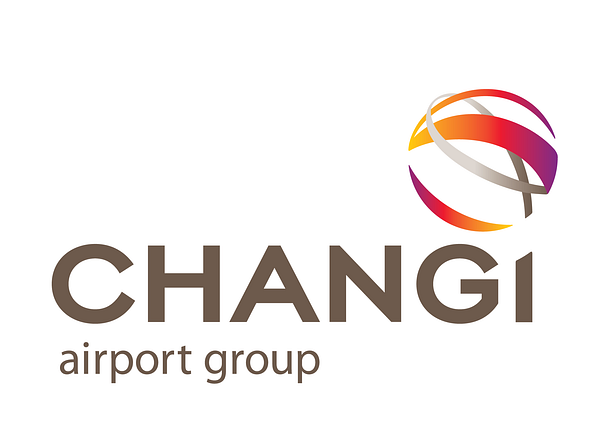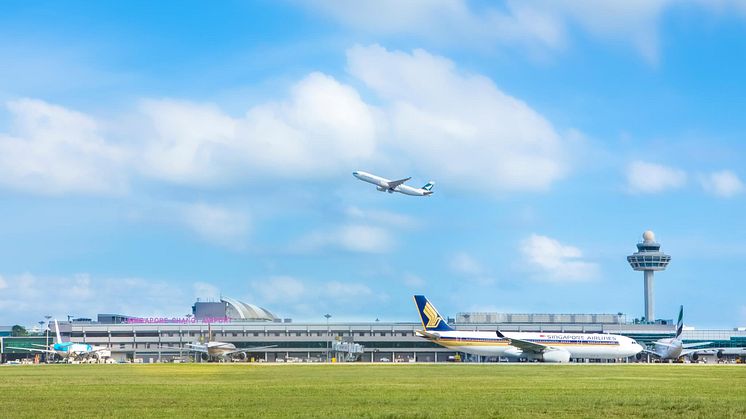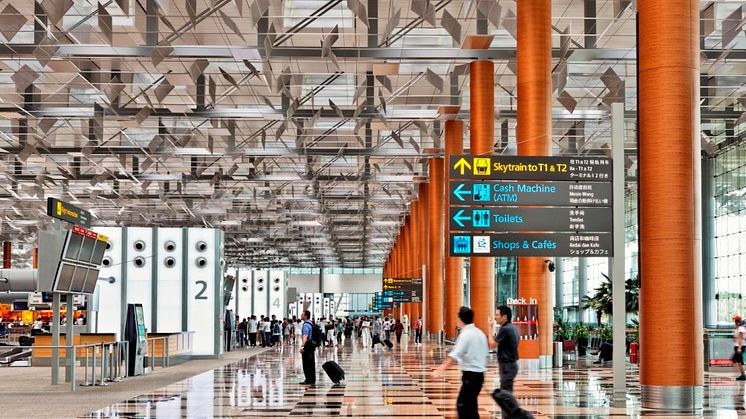
Press release -
Operating indicators for August 2011
Singapore Changi Airport handled 3.86 million passenger movements in August 2011, an increase of 11.2% over the same month last year. Aircraft movements grew in tandem by 14.9% with 25,700 movements recorded during the month. Year-to-date, passenger movements grew 11.2% to 30.4 million.
Regional traffic to and from Northeast and Southeast Asia continued to underpin demand for air travel. Growth was strongest for Bangkok, Denpasar (Bali), Hong Kong, Manila and Tokyo, with each registering a double-digit increase. Traffic between Singapore and Tokyo (12.0%) and all of Japan (14.4%) grew for the second consecutive month.
Low cost carriers (LCCs) carried 26.3% more passengers compared to a year ago while full service carriers grew 6.8% albeit from a bigger base. LCCs accounted for a quarter of all flights at Changi.
Changi Airport welcomed the commencement of Jetstar’s thrice-weekly services linking Singapore to Ningbo, China on 9 September. Ningbo is the third[1] new Chinese city to be connected to Singapore this year. India’s largest LCC IndiGo Airlines also began operations at Changi on 15 September. The airline operates a daily service to New Delhi and will begin Singapore-Mumbai flights from the middle of October.
Airfreight movements at Changi Airport totalled 153,000 tonnes in August, a dip of 0.9% on-year. A more than 7% increase in cargo transhipments could not offset the decline in exports and imports. Year-to-date, Changi has handled 1.22 million tonnes of cargo, a 2.5% increase compared to the same period last year.
During August, Changi strengthened its connection to Greater China with Singapore Airlines Cargo increasing frequencies to Xiamen and Shanghai while Hong Kong Airlines launched three additional weekly Singapore-Hong Kong freighter services. Singapore Airlines Cargo also increased frequencies to Sydney and Auckland.
As at 1 September 2011, Changi Airport serves 100 airlines operating more than 5,900 weekly flights to some 200 cities in 60 countries and territories.
Changi Airport’s traffic statistics are available at
http://www.changiairportgroup.com/cag/html/the-group/air_traffic_statistics.html
Other highlights at Changi
New Outlets – Travellers arriving in Terminal 1 can now enjoy fresh coffee from Starbucks after the Seattle-based coffee chain opened its latest outlet at Terminal 1’s Arrival Hall. Terminal 3’s Basement 2 also welcomed lifestyle and fashion outlet SPELL last month. SPELL, which is managed by students of Singapore Polytechnic,offers an exciting range of premium quality street wear designs including sneakers, graphic tees, hoodies and sweatshirts as well as costume jewellery and accessories.
[1] New Chinese cities connected to Changi this year are Nanning, Ningbo and Zhengzhou.
Topics
Categories
About Changi Airport Group
Changi Airport Group (Singapore) Pte Ltd (CAG) (www.changiairportgroup.com) was formed on 16 June 2009 and the corporatisation of Singapore Changi Airport followed on 1 July 2009. As the company managing Changi Airport, CAG undertakes key functions focusing on airport operations and management, air hub development, commercial activities and airport emergency services. Through its subsidiary Changi Airports International, the Group invests in and manages foreign airports to spread the success of Changi Airport internationally.
Changi Airport (www.changiairport.com) is the world’s most awarded airport having garnered more than 370 accolades since it opened in 1981. Changi handled more than 42 million passenger movements in 2010, an annual record in passenger traffic. The airport, which has four terminals, serves some 100 airlines flying to over 200 cities in about 60 countries and territories worldwide. A flight takes off or lands at Changi roughly once every 100 seconds.


